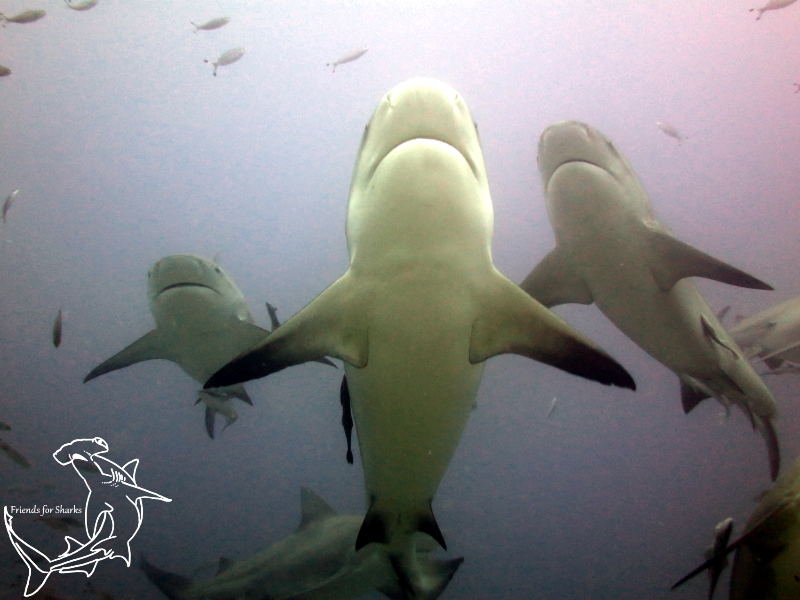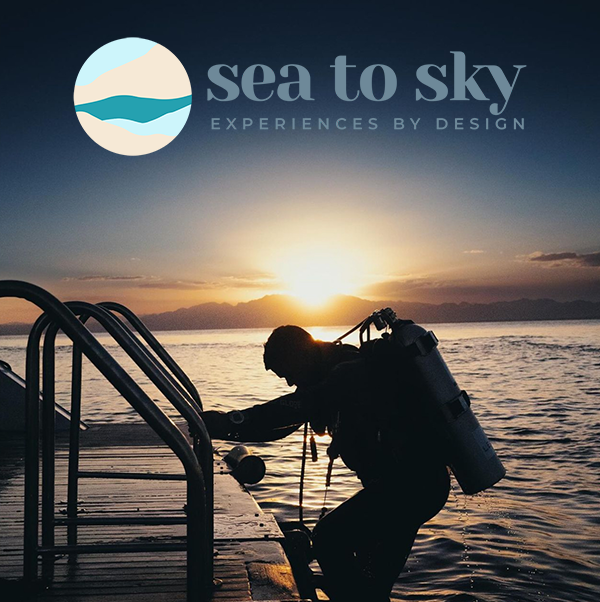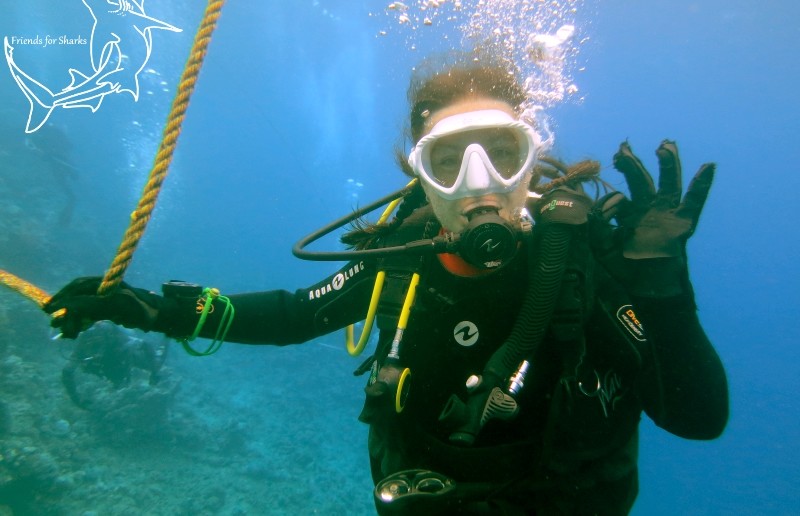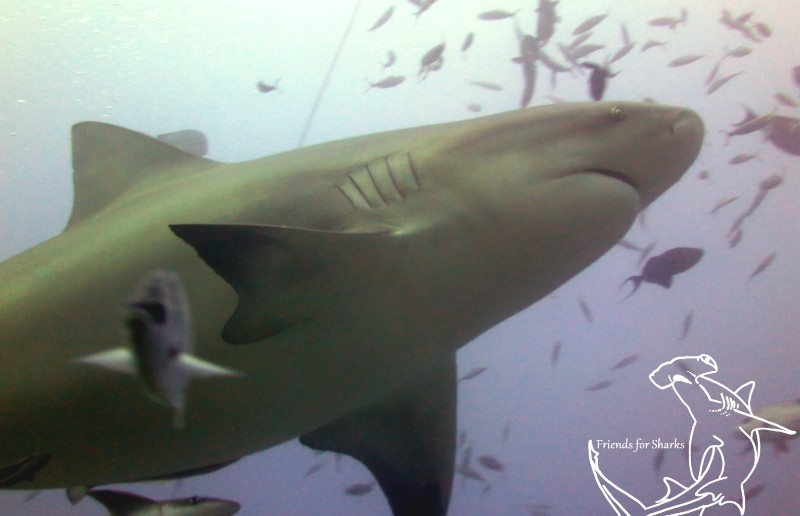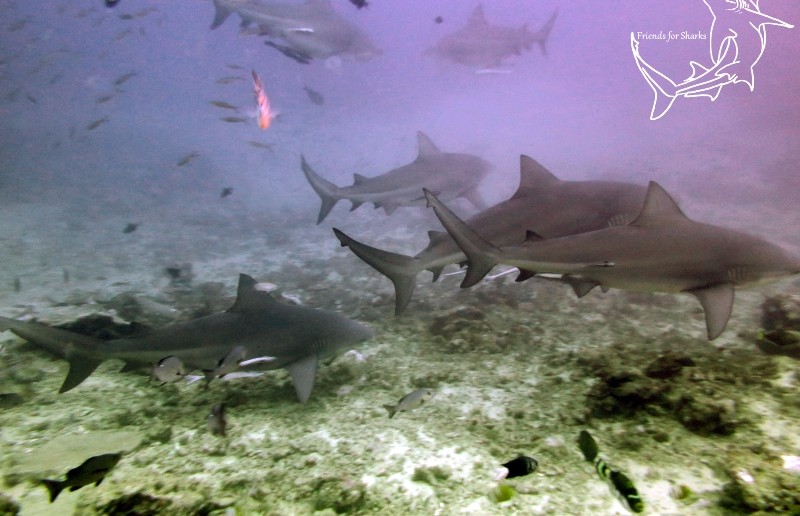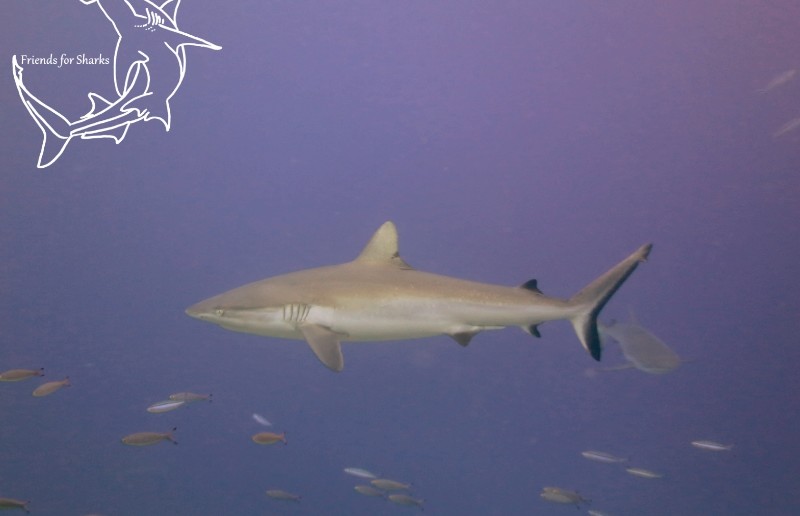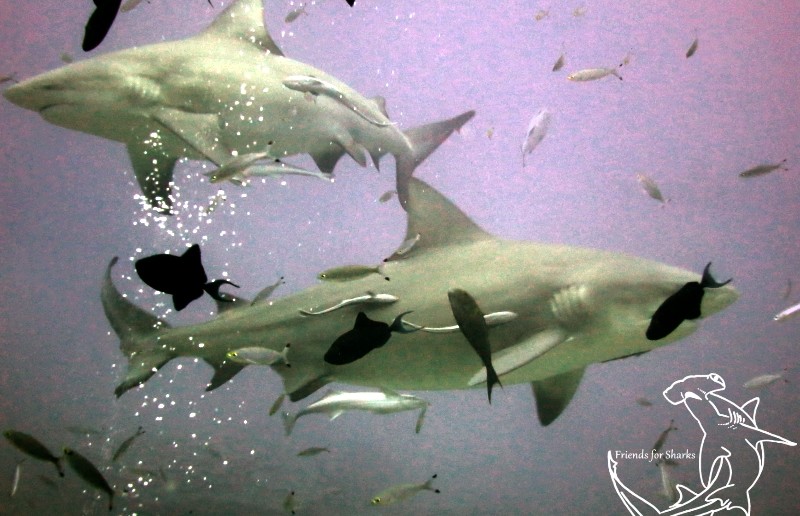Day two of our shark diving adventure soon arrived and, after the crazy conditions of our first dive, I was hesitant to be heading back out to sea and kept my expectations low on the way to Beqa Adventure Divers in Pacific Harbour. I had heard great things about this dive centre, especially how organised and attentive the staff were, and they lived up to that reputation from the moment we arrived. The dive centre staff were welcoming, helpful and the dive operations were seamless throughout the day – which is no easy task at a busy dive centre with the world’s No.1 shark dive, as rated by the legendary Ron and Valerie Taylor.
Related: Diving with Bulls in Fiji – Part One
Beqa Adventure Divers (BAD) have worked closely with the Government of Fiji and the owners of Shark Reef to have it designated as a protected Marine Park: Shark Reef Marine Reserve and their eco-tourism operations are a fantastic example of what can be achieved to protect and promote ocean ecosystems. They are committed to conservation and we were delighted to find that $35 FJD is donated from each customer’s payment to the traditional village that owns Shark Reef.
The diving gear was great quality, the wetsuits were clearly well cared for and we boarded the boat whilst the Dive Masters checked and assembled our gear for the first dive. We motored through the peaceful mangroves of the river adjacent to the dive centre whilst listening to a thorough safety and dive briefing and were each assigned our own Dive Master – which is standard practice during the BAD shark dives. We couldn’t believe our luck when we found out that the centre’s second boat was being serviced and so only our boat, which contained five divers, would be diving Shark Reef. My expectations began to rise as we enjoyed a choppy but pleasant crossing of the ocean and paused in calm waters whilst we kitted up behind the reef. Once we were all ready and had checked our gear thoroughly, we headed back to the front of Shark Reef and moored up.
I was a little nervous given my last shark dive experience with the raging currents but I needn’t have worried. The current was barely noticeable and the shark feeding arena looking inviting at 30m depth below us. We descended and immediately noticed Grey Reef sharks swimming by during the descent. The water was blue, crystal clear and the sharks were easily visible as we watched our dive computers mark the increasing depth. Once at 30m, we kneeled behind the reef wall and watched as magnificent and chunky Bull sharks arrived. No doubt the scent of tuna heads had brought them in and they were wonderful to watch as they glided gracefully past, a few metres distant from us, and turned at the last moment away from the divers feeding them. There were various species of reef fish present but, to be honest, I paid them little attention as I admired the sleek and muscular outlines of the passing sharks. I identified a female Bull shark with a bent caudal (tail) fin and later learned she was named Fold. She was a large and dominant shark and certainly had a presence about her. Another Bull, this time with a bent anal fin, was called Bum and it really added to the experience learning about those sharks afterwards. I wanted the sharks to come closer but they were content to keep their distance.
After 15 minutes, it was time to ascend to the next feeding station which was at 10m depth. There we expected to see Grey Reef sharks as we knelt/crouched behind the reef wall and Papa, a staff member, fed them. They clearly liked Papa and his tube of fish, as the sharks came within 30cm of the divers. I was like a child at Christmas watching them glide by excitedly. I could see their distinctive black-edged tails, their beautiful eyes and the pores on their snouts. It was shark heaven as they kept coming in for a feed, I kept squealing to myself and the sharks totally ignored our presence as they swooped overhead with their fish. Our 15 minutes flew by and then it was time to visit the final feeding station at 5m depth for 10 minutes.
The light was glorious at 5m depth, as you would expect, and the coral and reef fish were colourful and plentiful. The swell overhead pulled us back and forth gently as we held onto a fixed line and eagerly awaited White-tip Reef and Black-tip Reef sharks. The underside of the waves provided beautiful light patterns as the sharks arrived and I had prime position right next to the bait tube. The White-tip Reef sharks were bold and inquisitive and weaved their way among the corals and under Papa’s arms as they nosed at the bait tube. Their sinuous movements and speed when a fish was presented left me wondering how many sharks were present at times amid the flurry of shark tails. They came within centimetres of our faces and turned at the last moment, well aware of and undeterred by our presence. I was lucky enough to be swiped gently in the face by one White-tip Reef sharks tail as he or she glided away. The Black-tip Reef sharks were a little less bold and arrived in a group when the White-tips were less active. Their distinctive black fins and grey/white patterns on their flanks make them easily distinguishable from the petite White-tips with their bronze coloration and whiskered face. I could have stayed there for hours but after our allotted 10 minutes it was time to surface.
Nicholas and I were grinning like Cheshire cats. It was without a doubt the best shark dive we had ever experienced and surely the second dive wouldn’t have a hope of being better? It was during our surface interval that we learned the first dive had been quiet for Bull sharks, with only 15 sharks. In peak season they see upwards of 50 Bull sharks during a dive, though to be honest our 15 was incredible in itself. We were told more about the conservation work of BAD during our surface interval and also discovered that the Bull sharks give birth in the river mangroves and remain with their pups for a number of months before returning to Shark Reef. Bull sharks are the only species of shark that can exist for long periods of time in freshwater and they are known for their ability to penetrate long distance up rivers. Mangroves, such as those in Fiji, are crucial habitats for sharks and provide nursery and pupping grounds for a number of shark species worldwide.
The IUCN classes Bull sharks as Near Threatened with extinction and the work being done by BAD and other organisations is vital for their survival in our ever-degrading and increasingly fished ocean ecosystems. As with many other shark species, they are commonly caught in commercial and recreational fisheries and they have been exploited for their skin, liver oil and most notably their fins.
As we ended our surface interval, we were advised that the second dive would be even better as the style of diving would allow the Bull sharks to come even closer. I couldn’t imagine anything being better than our first dive and we descended eagerly. When we reached the 25m feeding station we were instructed to lie on our stomachs, wait and watch. The Bull sharks were quick to arrive, I noticed Fold and Bum were present, and they turned effortlessly and with grace as they rose to the tuna heads being dropped in front of us. It was quite something watching the sharks’ white bellies and silhouettes framed by the sunlight above as they followed the scent of tuna and then swooped back down to the reef and our eye level. As time passed, the sharks gained confidence and I was mesmerised as they swam directly towards us repeatedly and turned at the last moment less than a metre from our faces. Their bulk and blunt noses were clearly defined as they passed us and not once did I feel threatened or in the least bit intimated. The sharks were there to feed and they were not remotely interested in our presence. It was such a privilege to be at eye-level with over 25 Bull sharks and our 20 minutes passed by in a blur. Everywhere I looked there were sharks and Nicholas didn’t know where to point his camera at times.
By the time we were due to ascend to 15m for a coral reef tour, Nicholas and I had reached our decompression limits because we had been diving nearby reefs the previous day. Whilst the other divers explored the corals and giant clams, we ascended to 5m for an extended safety stop instead. Whilst hanging in the blue, Grey reef sharks swam below us and the surface of the water sparkled above us. I thought to myself that life really couldn’t get much better than this. I have dived with a number of shark species in various locations around the world and those two dives with BAD were without a doubt the best.
To find out more about Friends for Sharks and follow Nicholas and Kathryn’s charitable world tour in aid of shark conservation, please visit their website and Facebook pages:


